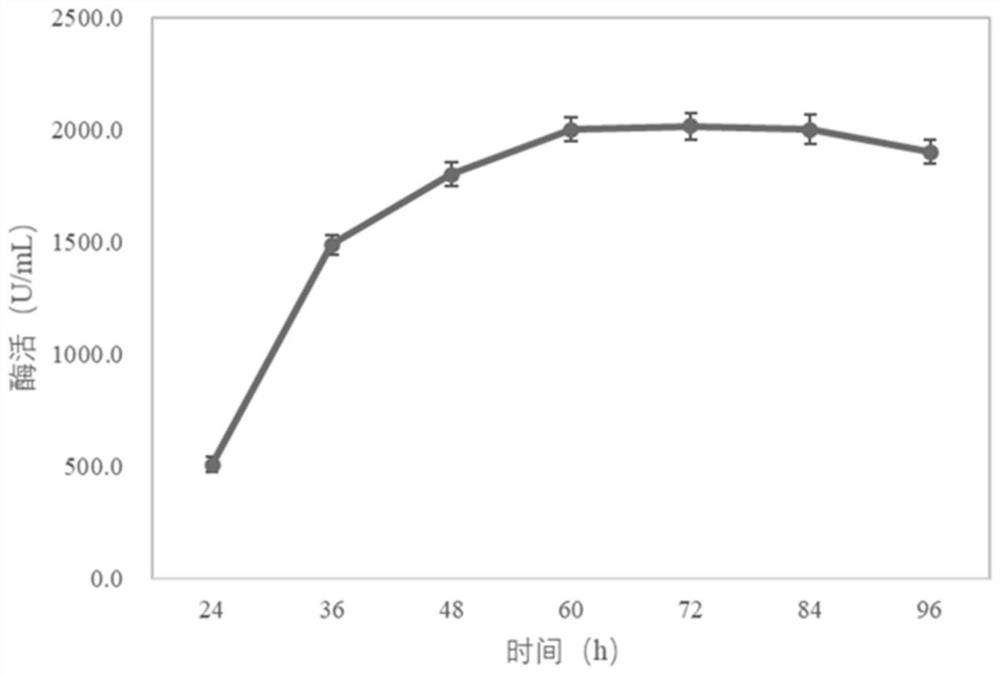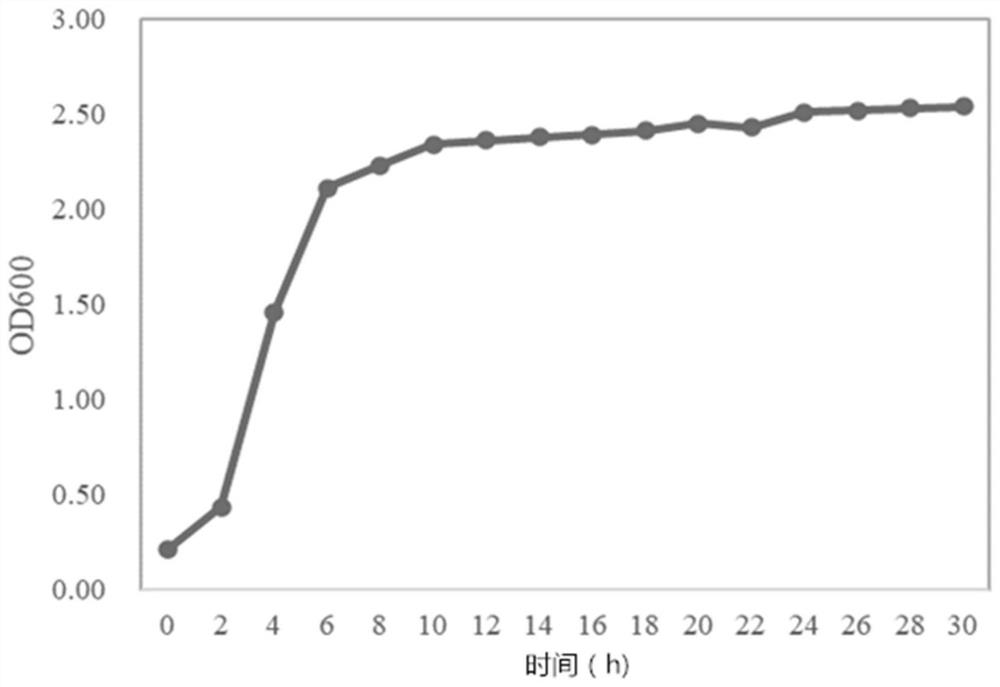Micro-ecological composite additive and application thereof in aquaculture
A compound additive and micro-ecological technology, applied in microorganism-based methods, applications, microorganisms, etc., can solve problems affecting aquatic product food safety, aquatic animal residues, drug-resistant strains, etc., to improve the full-cycle survival rate, promote The effect of absorption and utilization, efficient decomposition
- Summary
- Abstract
- Description
- Claims
- Application Information
AI Technical Summary
Problems solved by technology
Method used
Image
Examples
Embodiment 1
[0033] Isolation, screening and identification of embodiment 1 bacterial strain
[0034] 1. Sample
[0035] The intestines of Litopenaeus vannamei were collected from the shrimp farm in Jiaozhou, Qingdao.
[0036] 2. Screening method
[0037] Take the intestinal tract of prawns, add sterile saline, shake at 28°C, 150rpm for 1 hour, so that the bacteria are fully dispersed in the saline, 10-fold gradient dilution, inoculated on 2216E, TSB and MRS solid medium respectively, and culture at 28°C 24h-48h. Select a uniform and clear single colony and streak to purify the bacteria. The obtained single colonies were named DN01, DN02, DN03, ..., DN32 accordingly.
[0038] 3. Analysis of biological characteristics of symbiotic bacteria in shrimp digestive tract
[0039] The symbiotic bacteria (test strain) and pathogenic bacteria (control strain) were activated and cultured on an inclined plane, and an appropriate amount of normal saline was added to make a concentration of 10 4-7...
Embodiment 2
[0052] Example 2 Bacillus subtilis DN02 Enzyme Production Ability Determination
[0053] 1. Qualitative experiment on enzyme production ability of potential probiotics
[0054] Prepare protease-producing qualitative medium, amylase-producing qualitative medium, and cellulase-producing qualitative medium respectively, activate the screened antagonistic bacteria of pathogenic bacteria, and inoculate the liquid culture of each strain on different culture mediums with sterile inoculation sticks. On the base, cultivate at constant temperature for 48 hours, and observe after the formation of obvious colonies. When the strain produces protease to decompose casein, a transparent circle appears on the plate; the starch medium needs to be added with Lugol's iodine solution, and the strain produces amylase, and a transparent circle appears on the blue-purple plate; the qualitative medium producing cellulase needs to be stained with Congo red , and then washed with NaCl, the colony produ...
Embodiment 3
[0065] Embodiment 3 Bacillus subtilis DN02 growth performance evaluation
[0066] Inoculate Bacillus subtilis DN02 into the liquid fermentation medium according to the inoculation amount of 1%, 30°C, 180r / min, shake culture, take samples every 2h, measure the OD 600 value of the bacterial liquid, see the specific results figure 2 .
[0067] Such as figure 2 As shown, the growth curve of Bacillus subtilis DN02 changes in stages, and its lag period is short. After 4 hours, it enters the exponential growth period, and the OD value shows a rapid growth trend, and it is in a stable period for 10-28 hours. At the same time, the bacterium produced spores when cultured for 8 hours, and the concentration of spores reached 10 8 CFU / mL. The characteristics of short growth lag period and long stable period of DN02 are very suitable for the development of fermentation industry. Example 4 Determination of intestinal adhesion ability of Bacillus subtilis DN02
PUM
 Login to View More
Login to View More Abstract
Description
Claims
Application Information
 Login to View More
Login to View More - R&D
- Intellectual Property
- Life Sciences
- Materials
- Tech Scout
- Unparalleled Data Quality
- Higher Quality Content
- 60% Fewer Hallucinations
Browse by: Latest US Patents, China's latest patents, Technical Efficacy Thesaurus, Application Domain, Technology Topic, Popular Technical Reports.
© 2025 PatSnap. All rights reserved.Legal|Privacy policy|Modern Slavery Act Transparency Statement|Sitemap|About US| Contact US: help@patsnap.com



